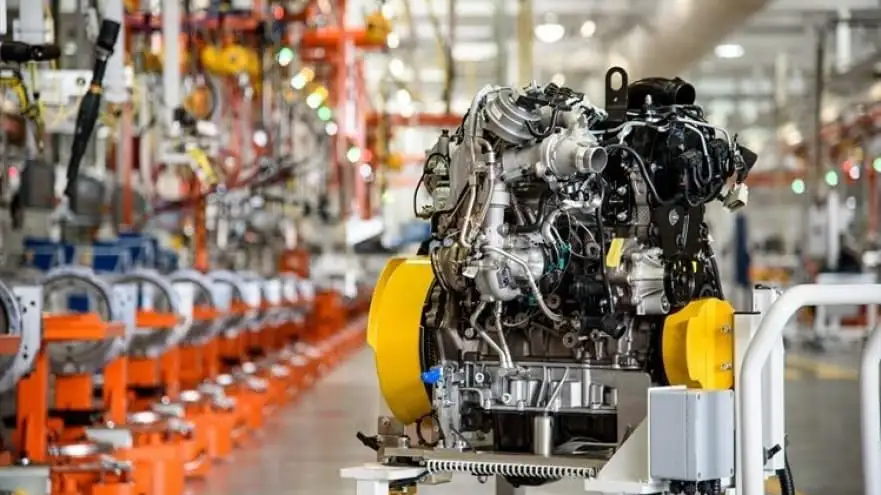

Last updated on September 11th, 2021 at 03:02 pm
The Ford Struandale Engine Plant in Port Elizabeth is home to two engine programmes currently, the latest and most advanced being the new-generation 157kW/500Nm 2.0 Bi-Turbo and 132kW/420Nm 2.0 Single Turbo engines that power the locally assembled Ford Ranger Raptor, as well as selected Ranger and Everest models.
The introduction of the new diesel engine programme followed an investment of R3-billion in Ford’s South African operations at the Struandale Engine Plant and the Silverton Assembly Plant in Pretoria, announced in 2017.
A 3 868m2 assembly hall was built for the new engine programme, which produces a total of nine derivatives of the 2.0-litre turbodiesel units. This facility has an installed capacity to produce up to 120 000 engines per year, and currently runs two shifts, five days per week, assembling 320 engines per day – or one engine every 134 seconds. The assembly line is 312 metres long with 110 stations and 96 operators per shift.
“The new assembly line incorporates Ford’s latest, state-of-the-art manufacturing processes that guarantee the highest standards of workmanship, product quality and performance,” says Shawn Govender, Plant Manager of the Ford Struandale Engine Plant.
The sub-assembly line for the cylinder head features four automated robotic stations that ensure maximum precision in the fitment of parts. Four more robotic stations on the main assembly line apply the room temperature vulcanising (RTV) silicone gaskets on key components, such as the cylinder head, tappet cover and oil pan, with each operation monitored by integrated camera inspection systems that guarantee the highest levels of precision and quality control.
“Throughout the line we have extensive error-proofing and traceability mechanisms in place with multiple camera and transponder systems, ensuring that every step of the assembly process is tracked and recorded, right down to the tightening of each bolt by individual operators or machines,” Govender explains.
There are two cold-test cells at the end of the assembly line to check operating parameters and pressures of every engine that comes off the line, without starting the engine. A hot-test cell is used at selected intervals to evaluate the integrity and performance of engines during a short running cycle. Additionally, there is a dedicated high-performance engine dynamometer located at the plant to conduct a wide range of performance and durability tests.
South African President Cyril Ramaphosa defended his nation against claims of white discrimination made by tech magnate Elon Musk. After…
Hilton launched Signia by Hilton for its first appearance in Egypt and Africa through its hotel expansions. These hotels at…
UNICEF reported that, nearly 2900 people died of cholera across Eastern and Southern African countries while children suffer most greatly…
Enza, based in the United Arab Emirates, obtained $6.75 million in initial investment funding from Algebra Ventures and Quona Capital.…
US Secretary of State Marco Rubio ordered South African Ambassador Ebrahim Rasool to leave America by March 21 because he…
Early 2025 ends with IPL fever in India and cricket fans receive good news of an international schedule full of…
This website uses cookies.